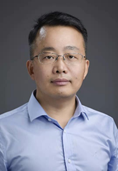报告人:何少龙 中科院宁波材料所 研究员

时间: 11月4日 下午3:30
地点: 中心校区知新楼C座7楼量子报告厅
邀请人: 陈延学 王以林
报告摘要:
材料的宏观性质由其微观电子结构决定,而自旋分辨/角分辨光电子能谱(ARPES)是研究材料微观电子结构最直接和最有力的研究手段。本报告主要介绍角自旋分辨/分辨光电子能谱在高温超导,拓扑绝缘体等量子材料电子结构研究中的应用。报告分两个部分:一、介绍自旋分辨/角分辨光电子能谱的工作原理[1];二、ARPES应用几个例子:1. 单层FeSe超导薄膜超导电性研究[2];2.拓扑绝缘体表面态中存在的自旋-轨道锁定现象[3];3.三维Rashba 自旋电子结构。[4]
References
[1] Xingjiang Zhou, Shaolong He et al., New Developments in Laser-Based Photoemission Spectroscopy and Its Scientific Applications, Rep. Prog. Phys. 81,062101 (2018)
[2] Shaolong He et al., Phase diagram and high temperature superconductivity at 65K in tuning carrier concentration of single-layer FeSe films, Nature Materials 12, 605 (2013)
[3] Zhuojin Xie, Shaolong He, et al., Orbital-selective spin texture and its manipulation in a topological insulator, Nature Communications 5, 3382 (2014)
[4]Ya Feng, Shaolong He* et al., Rashba-like spin splitting along three momentum directions in trigonal layered PtBi2, Nature Communications 10, 4765 (2019)
报告人简介:
何少龙博士,现为中国科学院宁波材料所研究员,博士生导师。2005年获得浙江大学物理系博士学位。2005年至2008年先后在日本广岛大学同步辐射中心及日本国立材料研究所从事博士后研究工作。2008年9月入选物理所所级百人计划。2016年9月加入中科院宁波材料所。主要研究方向是利用ARPES研究超导材料及拓扑绝缘体等量子材料的电子结构及自旋结构。迄今在Nature Materials, Nature Communications,PNAS等国际重要学术期刊上发表了20多篇论文,文章总引用超过2000次,其中单篇引用超过500次。(研究组网页:https://shaolonghe.nimte.ac.cn/ )
欢迎感兴趣的师生参加!



